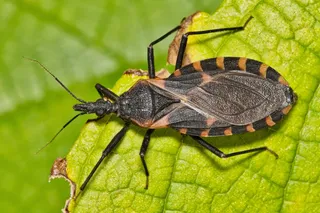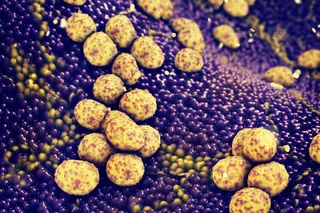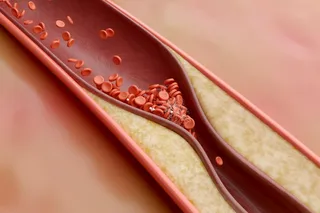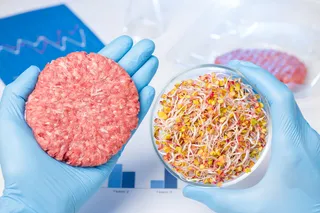The New York Times has an interesting article, Picky Eaters? They Get It From You, which I'm sure many parents can relate to. Here's the most critical part:
The study, led by Dr. Lucy Cooke of the department of epidemiology and public health at University College London, was published in the American Journal of Clinical Nutrition in August. Dr. Cooke and others in the field believe it is the first to use a standard scale to investigate the contribution of genetics and environment to childhood neophobia. According to the report, 78 percent is genetic and the other 22 percent environmental. "People have really dismissed this as an idea because they have been looking at the social associations between parents and their children," Dr. Cooke said. "I came from a position of not wanting to blame parents."
The original research, Genetic and environmental influences on children's food neophobia, is a bit clearer:
The results showed that neophobia is highly heritable. The heritability estimate from model fitting was 0.78...A further 22% of the variance was explained by nonshared environmental factors, with no influence of shared environmental factors.
Note the word: heritable. Heritability is the proportion of the variation of a trait (in this case, a psychological aversion to new foods) within a population that is due to the variation of genes (e.g., compare siblings, half siblings, twins, cousins, unrelated individuals, etc.). Basically it is suggesting that within the population whether you have a parent who was neophobic is a very good predictor for whether the child is neophobic. Another interesting finding here is that most of the non-genetic component of variation is nonshared, basically, that means that this isn't about parents or home environment. Instead it is some other factor. This shouldn't be that surprising, one of the most consistent findings of behavior genetic research is that most of the non-genetic variation in personality does not seem to be attributable to shared environment (generally it seems that half the variation is genetic and that most of the rest is nonshared environment with a small residual on the order of ten percent due to shared environment). Judith Rich Harris has made this finding the centerpiece of two books, The Nurture Assumption and No Two Alike, where she offers her own explanation of what the nonshared environment is and how it operates. Finally, I think it is important to bring up an obvious upstream variable to this finding: variation of taste perception, especially for bitter foods. The genetics of his has been partly elucidated, and obviously genes are passed from parent to child, so food aversions reinforced or triggered by negative sensory responses will track heredity. There is already data that when there is genetic variation across generations that may result in friction between parent.^1 I doubt this explains all or most of the neophobia, but it is probably some of it. 1 - If you imagine that bitter sensitivity is mongenic and there are two alleles of additive effect you may have a situation where one parent is a highly sensitive super-taster (homozygous) and another parent is a taste (heterozygous) and the offspring is a super-taster. If the parent who is a taster is the primary caregiver then you have a situation where there is a disjunction in terms of aversion to bitter tastes that emerges from the biology.













